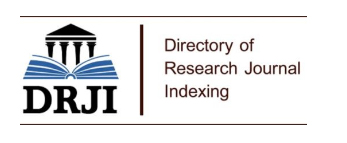Characterization of odor-active compounds in pond apple (Annona glabra L.) fruit
DOI:
https://doi.org/10.57252/jrpfoods.2024.8Keywords:
pond apple, Annona glabra, HS-SPME, GC-MS, GC-O, odor activity valueAbstract
Pond apple (Annona glabra L.) is a tree native to the tropical and subtropical regions of
America. It has an edible yellowish-orange pulp that can be made into jam and jelly. Volatile
constituents of pound apple fruit were isolated by headspace-solid phase microextraction
(HS-SPME) and analyzed by gas chromatography with GC-FID and GC-MS. A total of 48
volatile compounds were detected, 46 of them were positively identified in pond apple fruit.
This study revealed potent odorants that are responsible for the overall aroma of this fruit by
application of HS-SPME-GC-O analysis and odor activity values. Twenty-five odorants were
considered as potentially odor-active compounds, from which ethyl 3-methylbutanoate, α-
pinene, myrcene, methyl 2-hydroxy-4-methylpentanoate, ethyl hexanoate, p-cymene,
limonene, (Z)-β-ocimene and linalool were the most odor-active compounds. The strong
agreement between the results of the OAV strategy and HS-SPME-GC-O suggests that HS-
SPME-GC-O has significant potential as a quick and straightforward tool for monitoring and
evaluating the aroma quality of pond apple fruit.
References
Balasubramanian, S. & Panigrahi, S. (2011). Solid-Phase Microextraction (SPME) techniques for quality characterization of food products: A review. Food Bioprocess Technology, 4, 1-26.
Cengiz, N., Guclu, G., Kelebek, H., & Selli, S. (2023). GC–MS-Olfactometric characterization of key odorants in rainbow trout by the application of aroma extract dilution analysis: Understanding locational and seasonal effects. Food Chemistry, 407, 135137.
Czerny M., Christlbauer M., Christlbauer M., Fischer A., Granvogl M., Hammer M., Hartl, C., Moran-Hernandez, N., & Schieberle, P. (2008). Re-investigation on odour thresholds of key food aroma compounds and development of an aroma language based on odour qualities of defined aqueous odorant solutions. European Food Research and Technology, 228, 265-273.
Cuevas-Glory, L. F., Sauri-Duch, E., Sosa-Moguel, O., & Pino, J. A. (2020). Characterization of odor-active compounds in mango ‘Ataulfo’ (Mangifera indica L.) fruit. Chemical Papers, 74(11), 4025-4032.
Gou, M., Bi, J., Chen, Q., Wu, X., Fauconnier, M.L., & Qiao, Y. (2021). Advances and perspectives in fruits and vegetables flavor based on molecular sensory science. Food Reviews International, 39(6), 3066-3079.
Kilic-Buyukkurt, O. (2024). Application of molecular sensory analysis in determining food flavor: a review. Journal of Raw Material to Processed Foods, 5(1), 1-10.
Liu, H., An, K., Su, S., Yu, Y., Wu, J., Xiao, G., & Xu, Y. (2020). Aromatic characterization of mangoes (Mangifera indica L.) using solid phase extraction coupled with gas chromatography–mass spectrometry and olfactometry and sensory analyses. Foods, 9, 75.
Liu,W., Zhang, Y., Ma, R., Yu, M. (2022). Comparison of aroma trait of the white-fleshed peach ‘Hu Jing Mi Lu’ and the yellow-fleshed peach ‘Jin Yuan’ based on odor activity value and odor characteristics. Horticulturae, 8, 245.
Pino, J.A., Marbot, R., & Agüero, J. (2002). Volatile components of baga (Annona glabra L.) fruit. Journal of Essential Oil Research, 14, 252-253.
Pino, J.A. (2010). Annona fruits. In Handbook of Fruit and Vegetable Flavors (pp. 231-246). John Wiley & Sons, Inc. Hoboken, New Jersey, USA.
Pino, J.A., & Roncal, E. (2016). Characterisation of odour-active compounds in cherimoya (Annona cherimola Mill.) fruit. Flavour and Fragrance Journal, 31, 143-148.
Pino, J.A., & Barzola-Miranda, S.E. (2020). Characterization of odor-active compounds in pechiche (Vitex cymosa Berteo ex Speng) fruit. Journal of Raw Material to Processed Foods, 1(2), 33-39.
Pino, J.A., & Trujillo, R. (2021). Characterization of odour-active compounds of sour guava (Psidium acidum [DC.] Landrum) fruit by gas chromatography-olfactometry and odour activity value. Flavour and Fragrance Journal, 36(2), 207-212.
Santos, A.S., Andrade, E.H.A., Zoghbi, M.G.B., & Maia, J.A.S. (1998). Volatile constituents of fruits of Annona glabra L. from Brazil. Flavour and Fragrance Journal, 13, 148-150.
Schieberle, P., & Hofmann, T. (2011). Mapping the combinatorial code of food flavors by means of molecular sensory science approach. In Food Flavors. Chemical, Sensory and Technological Properties (pp. 413-438). CRC Press, Boca Raton, USA.
Schmitt, R., Cappi, M., Pollner, G., & Greger, V. (2016). Key aroma compounds in Lippia dulcis (Dushi Button). Journal of Agricultural and Food Chemistry, 66, 2410-2413.
Steinhaus, M., Sinuco, D., Polster, J., Osorio, C., & Schieberle, P. (2009). Characterization of the key aroma compounds in pink guava (Psidium guajava L.) by means of aroma re-engineering experiments and omission tests. Journal of Agriculture and Food Chemistry, 57, 2882-2888.
Thang, T.D., Dai, D.N., Hoi, T.M., & Ogunwande, I.A. (2013) Study on the volatile oil contents of Annona glabra L., Annona squamosa L., Annona muricata L. and Annona reticulata L., from Vietnam. Natural Product Research: Formerly Natural Product Letters, 27(13), 1232-1236.
Van Gemert L.J. (2011). Compilations of Odour Threshold Values in Air, Water and Other Media. Oliemans Punter & Partners, Huizen, The Netherlands.
Wang, S.-L., Lin. S.-Y., Du, H.-T., Qin, L., Lei, L.-M., & Chen, D. (2021). An insight by molecular sensory science approaches to contributions and variations of the key odorants in shiitake mushrooms. Foods, 10, 622.
Downloads
Published
Issue
Section
License
Copyright (c) 2025 Journal of Raw Materials to Processed Foods

This work is licensed under a Creative Commons Attribution 4.0 International License.













